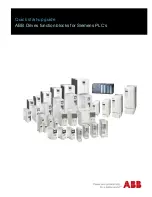
ESM
ADC
LIN
SPI
DCAN
NHET
Peripherals
- Generate Interrupt Requests
INT_REQ0 INT_REQ1
INT_REQ94
VIM
VBUSP
CPU
RTI
GCM
CAPEVT[1:0] Wakeup_INT
INT
Table
IRQ
Index
FIQ
Index
IRQ
Vector
FIQ
Vector
IRQ
FIQ
IRQ
Vector
VIC Port
- Interrupt Priority
- Interrupt Mapping
- Interrupt Enable
- Interrupt Generation
Configuration Register RegisterRegister Register Request Requestt
(Direct
Hardware
Vector)
Special Interrupts
CPU Interrupts
Overview
512
SPNU503C – March 2018
Copyright © 2018, Texas Instruments Incorporated
Vectored Interrupt Manager (VIM) Module
15.1 Overview
The vectored interrupt manager (VIM) provides hardware assistance for prioritizing and controlling the
many interrupt sources present on a device. Interrupts are caused by events outside of the normal flow of
program execution. Normally, these events require a timely response from the central processing unit
(CPU); therefore, when an interrupt occurs, the CPU switches execution from the normal program flow to
an interrupt service routine (ISR).
The VIM module has the following features:
•
Supports 95 interrupt channels, in both register vectored interrupt and hardware vectored interrupt
mode.
–
Provides IRQ vector directly to the CPU VIC port
–
Provides FIQ/IRQ vector through registers
–
Provides programmable priority and enable for interrupt request lines
•
Provides a direct hardware dispatch mechanism for fastest IRQ dispatch.
•
Provides two software dispatch mechanisms for backward compatibility with earlier generation of TI
processors.
–
Index interrupt
–
Register vectored interrupt
•
Parity protected vector interrupt table against soft errors.
15.2 Device Level Interrupt Management
A block diagram of device level interrupt handling is shown in
. When an event occurs within a
peripheral, the peripheral makes an interrupt request to the VIM. Then, VIM prioritizes the requests from
peripherals and provides the address of the highest interrupt service routine (ISR) to the CPU. Finally,
CPU starts executing the ISR instructions from that address in the ISR.
through
provide additional details about these three steps.
Figure 15-1. Device Level Interrupt Block Diagram
















































